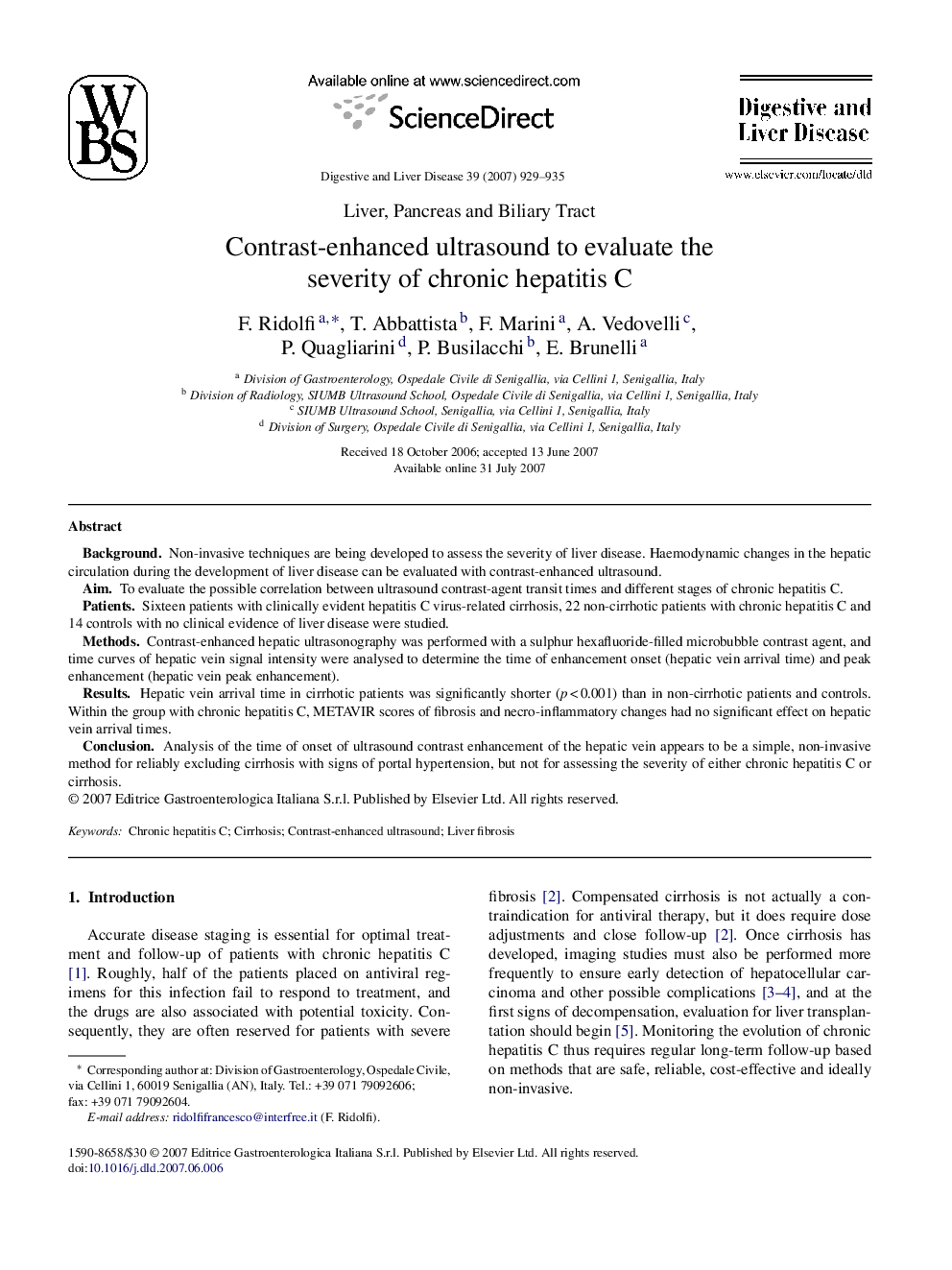| Article ID | Journal | Published Year | Pages | File Type |
|---|---|---|---|---|
| 3266010 | Digestive and Liver Disease | 2007 | 7 Pages |
BackgroundNon-invasive techniques are being developed to assess the severity of liver disease. Haemodynamic changes in the hepatic circulation during the development of liver disease can be evaluated with contrast-enhanced ultrasound.AimTo evaluate the possible correlation between ultrasound contrast-agent transit times and different stages of chronic hepatitis C.PatientsSixteen patients with clinically evident hepatitis C virus-related cirrhosis, 22 non-cirrhotic patients with chronic hepatitis C and 14 controls with no clinical evidence of liver disease were studied.MethodsContrast-enhanced hepatic ultrasonography was performed with a sulphur hexafluoride-filled microbubble contrast agent, and time curves of hepatic vein signal intensity were analysed to determine the time of enhancement onset (hepatic vein arrival time) and peak enhancement (hepatic vein peak enhancement).ResultsHepatic vein arrival time in cirrhotic patients was significantly shorter (p < 0.001) than in non-cirrhotic patients and controls. Within the group with chronic hepatitis C, METAVIR scores of fibrosis and necro-inflammatory changes had no significant effect on hepatic vein arrival times.ConclusionAnalysis of the time of onset of ultrasound contrast enhancement of the hepatic vein appears to be a simple, non-invasive method for reliably excluding cirrhosis with signs of portal hypertension, but not for assessing the severity of either chronic hepatitis C or cirrhosis.
